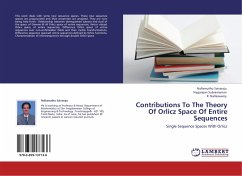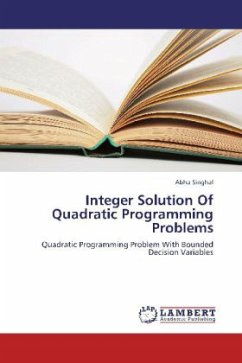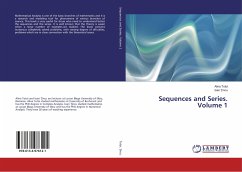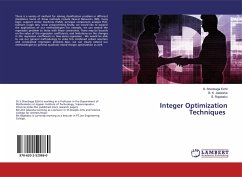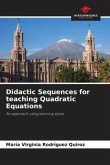Contains more than 5000 integer sequences, providing the name, mathematical description, and citations. This encyclopedia includes a number of diagrams and illustrations related to selected sequences. It is extensively cross-referenced. It also lists a bibliography.
Hinweis: Dieser Artikel kann nur an eine deutsche Lieferadresse ausgeliefert werden.
Hinweis: Dieser Artikel kann nur an eine deutsche Lieferadresse ausgeliefert werden.
"In spite of the large number of published mathematical tables, until the appearance of the first authors A Handbook of Integer Sequences in 1974 there was no table of sequences of integers. The 1974 book remedied this situation to a certain extent, and the present work is a greatly expanded version of that book. The main table contains 5488 sequences of integers (compared with 2372 in the first book), collected from all branches of mathematics and science. The sequences arearranged in numerical order, and for each one a brief description and a reference is given.
An invaluable tool. I shall say no more about this marvelous reference except that every recreational mathematician should buy a copy forthwith." --MARTIN GARDNER in Scientific American
"There are twice as many sequences as there were in Sloane's Handbook and those who have the Handbook will want The Encyclopedia....Many people who have searched in vain for some of the sequences missing from the Handbook will be quick to get copies of this new and expanded version to track down these missing sequences." --RICHARD K. GUY, University of Calgary
"What's the next whole number in this sequence: 2, 4, 7, 11, 16, 22, 29? The answer can be found in one of more than 5,000 entries in The Encyclopedia of Integer Sequences." --SCIENCE NEWS
"The number of sequences cataloged here is more than double the tally of the previous incarnation....If libraries shelve this book in the reference section, they should consider aquiring a second copy for circulation. The book will likely be in high demand, not just by researchers, but by browsers at all levels who will especially appreciate the entertaining commentaries interspersed every few pages throughout the encyclopedia. Highly recommended for all academic libraries." --CHOICE
"Incomparable, eccentric, yet very useful. Contains thousands of 'well-defined and interesting' infinite integer sequences together with references for each. Sequences are arranged lexicographically and (to minimize errors) typeset from computer tape. If you ever wondered what comes after 1,2,4,8,18,71...this is the place to look it up." --American Mathematical Monthly
An invaluable tool. I shall say no more about this marvelous reference except that every recreational mathematician should buy a copy forthwith." --MARTIN GARDNER in Scientific American
"There are twice as many sequences as there were in Sloane's Handbook and those who have the Handbook will want The Encyclopedia....Many people who have searched in vain for some of the sequences missing from the Handbook will be quick to get copies of this new and expanded version to track down these missing sequences." --RICHARD K. GUY, University of Calgary
"What's the next whole number in this sequence: 2, 4, 7, 11, 16, 22, 29? The answer can be found in one of more than 5,000 entries in The Encyclopedia of Integer Sequences." --SCIENCE NEWS
"The number of sequences cataloged here is more than double the tally of the previous incarnation....If libraries shelve this book in the reference section, they should consider aquiring a second copy for circulation. The book will likely be in high demand, not just by researchers, but by browsers at all levels who will especially appreciate the entertaining commentaries interspersed every few pages throughout the encyclopedia. Highly recommended for all academic libraries." --CHOICE
"Incomparable, eccentric, yet very useful. Contains thousands of 'well-defined and interesting' infinite integer sequences together with references for each. Sequences are arranged lexicographically and (to minimize errors) typeset from computer tape. If you ever wondered what comes after 1,2,4,8,18,71...this is the place to look it up." --American Mathematical Monthly


